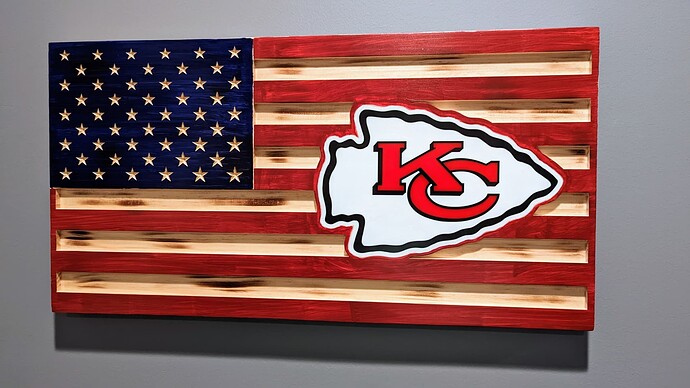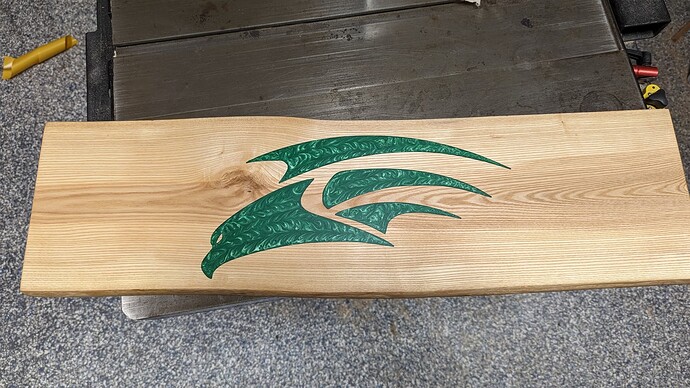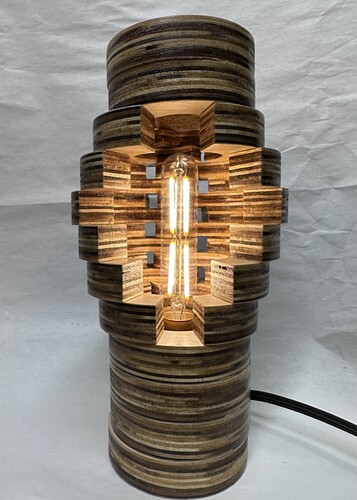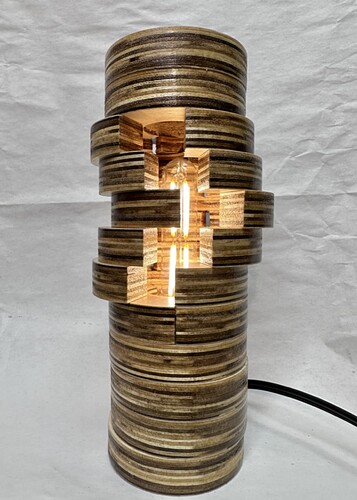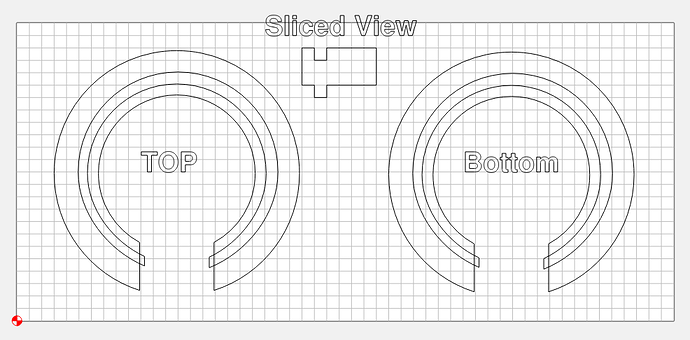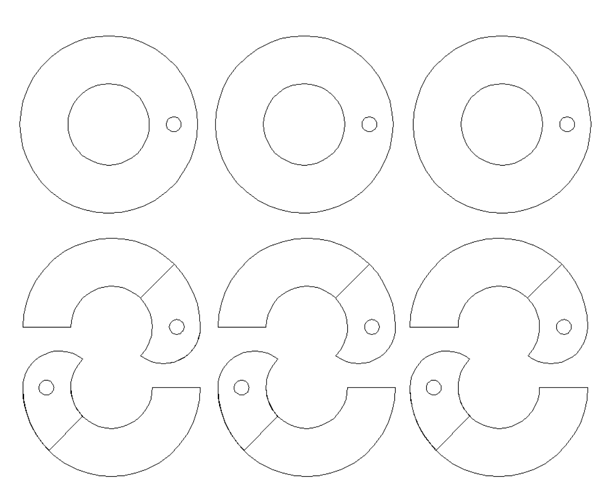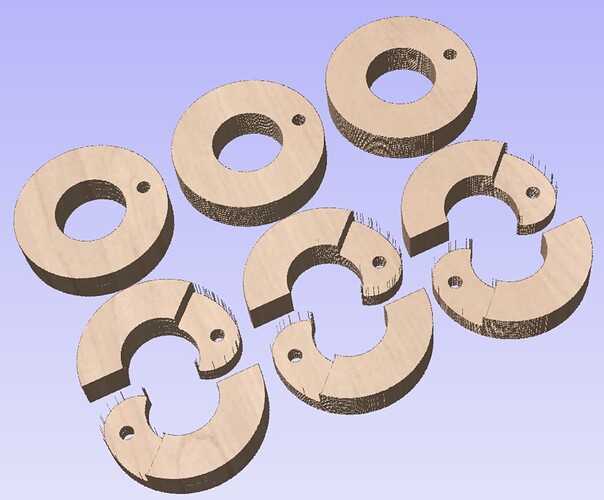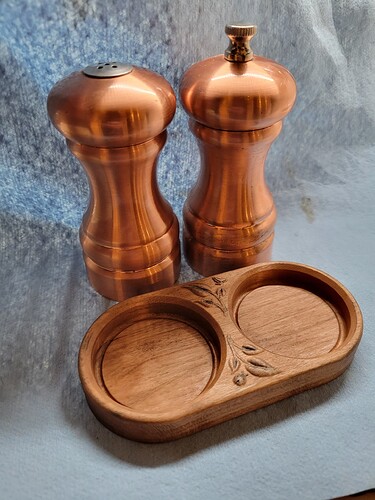@Dennyboy I added the .dxf project files/sketches to the post above.
Finished up some epoxy projects this week! KC flag for my son and epoxy/ash charcuterie board for local youth football team.
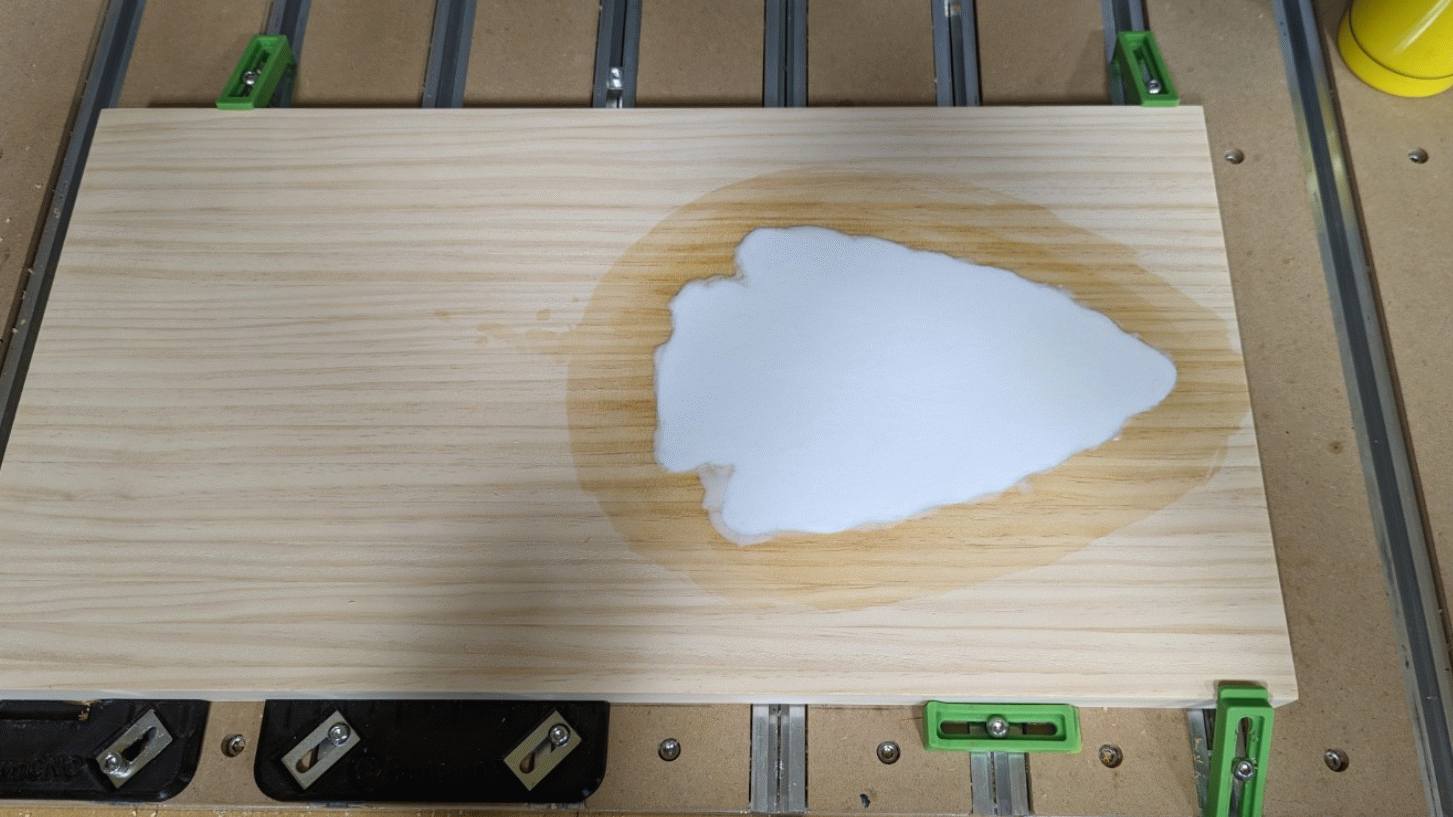
This concept would be cool if the gap in the ring could rotate 360 degrees.
That’s brilliant- I think I have to make that for my bedside tables
QQ:
How big were the circles, what plywood did you use, what finish
Love to see the design file
This was only a prototype to lock in the design using threaded rod from top to bottom. The finish was tung oil after which I applied a few layers spray-on poly. I’m working on a version with solid wood using a smooth rod and nylon inserts for smoother operation. You’re welcome to my file but it’s in Vcarve format.
The wings rotate 90 degrees in each direction.
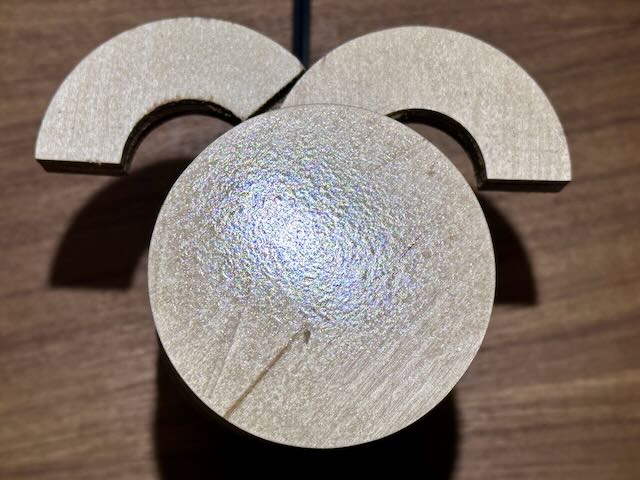
Love to see the vertric vcarve format
Your prototype looks good. How tall and big around is your prototype and what is your target size for your eventual project?
One other question about our Edison light bulb. Is it a regular tungsten or is it an LED? My concern about a tungsten light would be heat buildup inside so if it is maybe a vent in the top? If it is LED have you measured the heat buildup from the LED. Some LED are quite cool to the touch but some get hot.
Not positive, but it looks very much like this LED bulb here.
Let me preface by saying your design is great, I was just saying a variant would be cool as well.
I sometimes do not convey my exact meaning. What I meant by rotate 360 degrees is in the following example. I hope this helps.
This allows the ring gap to move 360 degrees. A slight variation from the original.
![]()
What holds the whole thing together? In his, the pivot point / hinge is also the structure that holds it together.
Either on the inside or outside rod(s) can be used to hold a cap on the top. Just like the said hinge.
Please understand, I am not challenging his design, just an alternative design for functionality. Food for thought to spark other projects.
Cool, but how does it rotate through the LED lamp? ![]()
The overall dimensions are 3"x9" but could easily have been shorter. The height was forced upon me by my choice of salt lamp cords but I liked the thumb-controlled dimmer. The tube-holding base was tall and I’ll likely find shorter ones when these run out. I could probably be built to 7.5" tall using these bulbs and even shorter with shorter tubes.
The bulb is LED, dimmable and are a warm 2700K. I’ve honestly not even detected heat emanating from the enclosure even after hours of use. Important topic but I don’t think heat is a concern in this design.
I’m confused with this question… The top of the ring is a track, the bottom is a rail. There is no going through the lamp, they move around the lamp. Each ring rotates on the one underneath individually.
I have no real dimensions. I drew up a quick representation of my thought of how it could be done.
Someone had posted a link to an application called Linkage. I have not had a chance to check it out but you might take a look at it if you continue to do projects that require linkage/pivots.
Here is a link to David Rector’s youtube channel. David makes the Linkage application.
Got it.
That wasn’t apparent to me from the drawing.
Cool idea!
